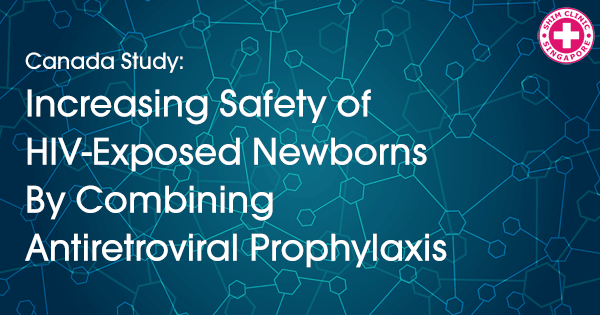The prenatal HIV and AIDS transmission has decreased globally over time. This said, there is a small percentage chance that newborns are still at risk. This is brought about by a number of reasons including but not limited to, failure of diagnosis at an earlier time during the period the woman is expectant. Poor intake or no drugs available for the pregnant mother is also another contributing factor. Some women due to various reasons also refuse the HIV antiretroviral treatment. These factors quoted here are among the reasons that lead to a newborn being exposed at a high risk of contracting HIV and AIDS.
Suggested Treatment for Infants at High Risk
In the US the department of Health and Human Services has suggested a procedural treatment of certain drugs for a given period. A six-week use of Zidovudine (ZDV) combined with three doses of Nevirapine (NVP) in the first one week. These are recommended for mothers who have taken on the antiretroviral treatment. However, qualified pediatrics may subscribe more than two antiretroviral medicines for an infant who is at high risk.
A research was carried out by Fatma W. Kakkar Division of infectious diseases, Montreal. Canada. The study was aimed at understanding the safety and tolerability of combined antiretroviral for HIV post-exposure prophylaxis of infants at high risk of contracting HIV.
The study was carried out in four Canadian treatment centers between 1997-2013. 148 HIV-1 exposed infants were selected and combined antiretroviral treatment was administered within the first 72 hours of birth. A minimum of six weeks dose was prescribed.
The Findings
The combination of Zidovudine (ZDV) combined with three doses of Nevirapine (NVP) in the first one week is effective because none of the infants who receive ZDV were infected with HIV. In the United Kingdom the percentage of infants in this treatment increased.
From the study, symptoms such as vomiting, diarrhea, rash and irritability, common among cART recipients, were not reported in any of the ZDV receiving infants.
However, the safety concern issues were yet to be clear. Questions like what is the right combination of antiretroviral medication for this cause, what is the right dose, how safe is it for the infant need to be addressed.
NonInvasive Effects of ZDV
The study reported more than required toxins in the blood within the first 6-week postnatal use of Zidovudine (ZDV). There was also a high number of anemic infants among those taking the treatment compared to those not taking the treatment. The infants taking the treatment were also smaller when compared to those who are not undergoing treatment.
Even though ZDV treatment seems effective, more research is needed to reduce the noninvasive side effects. Among the top priority should be, to establish the long term effect of the combination of antiretroviral and anti-exposure prophylaxis treatment on the individual child.
A routine of check up is also required for a successful outcome of the treatment. Counseling and advocacy for this treatment are necessary so that parents and the community at large learn the importance of this treatment. This done, reduction of the number of infants pulled out of treatment will reduce and so will the stigma associated with the treatment. The community will be more receptive to embrace the treatment thus infant mortality will reduce.
We feel that the research was successful in regards to putting across the intended information that PEP treatment has no adverse effects on infants. Post-exposure prophylaxis treatment given to infants should be taken seriously. The caregivers or parents should administer the medications properly and should be taken to the full term. Regular checkups for STD testing and HIV tests should be done and proper nutrition should be observed.
Review the original paper here: http://www.ncbi.nlm.nih.gov/pmc/articles/PMC4753845/

